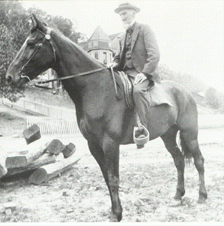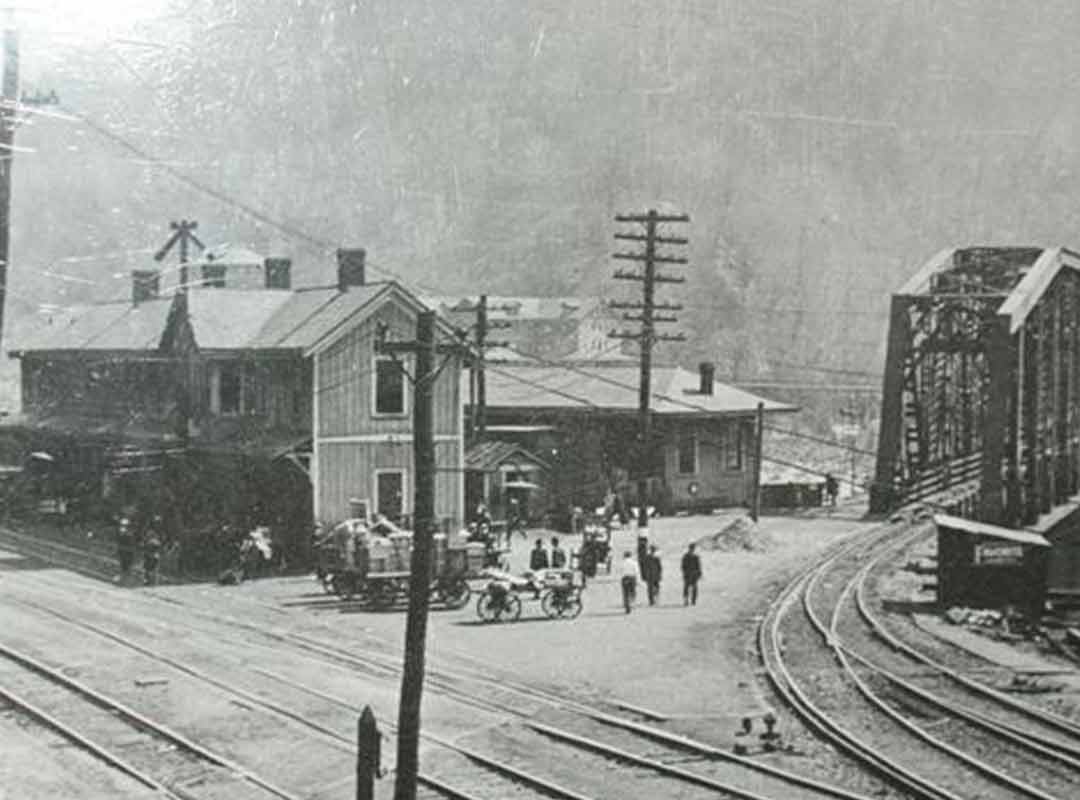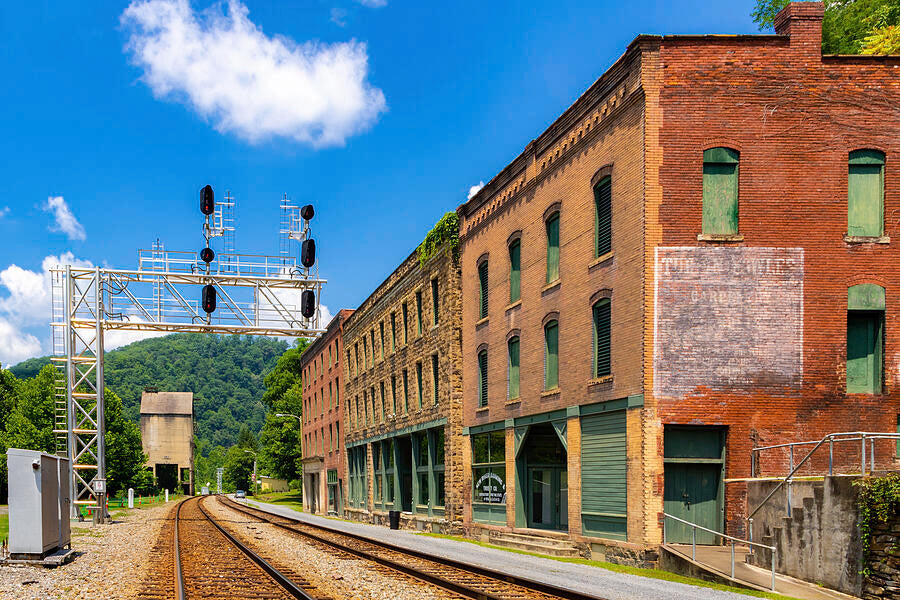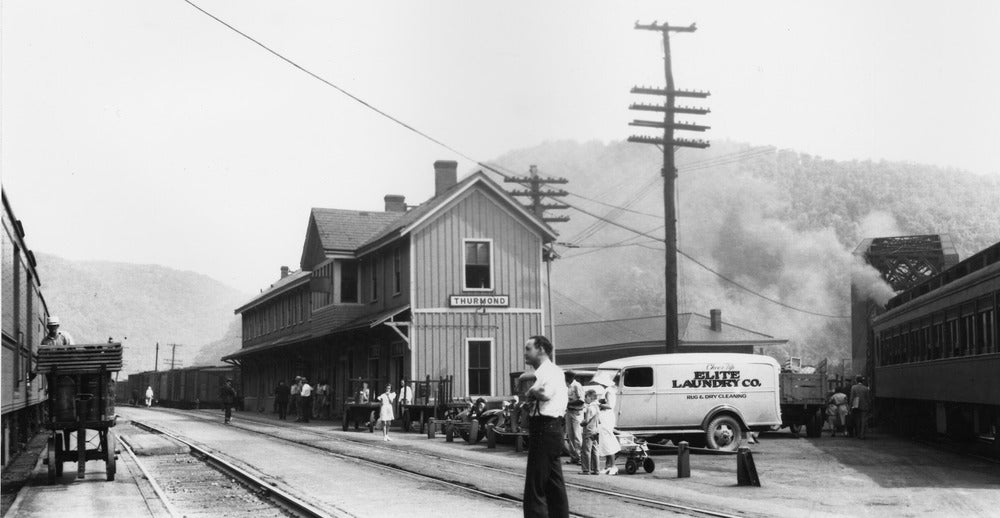
A Dream Takes Root (1873)
Thurmond began as a vision. In April of 1873, Captain William D. Thurmond was paid for his surveying work with 73 acres of rugged West Virginia land. What seemed like a simple transaction would soon spark the rise of a booming railroad town.
Positioned next to the newly completed Chesapeake & Ohio (C&O) Railroad and surrounded by rich coalfields, Thurmond was destined for growth.

A Town on the Rise (1880s–1903)
Thurmond’s potential began to take shape in the late 1880s with the construction of the Southside Junction railroad bridge across the New River. This vital connection helped transform Thurmond into a hub of rail traffic and coal commerce.
By the time the town was officially incorporated in 1903, it was thriving. A bustling steam engine repair shop kept the trains moving, and its location made it a critical player in the regional economy.

The Wild Side of Success
Across the river from Thurmond stood the town of Dunglen—a rowdy neighbor known for its hotels, gambling, and saloons. While Thurmond maintained a more reserved reputation, Dunglen's spirited atmosphere brought visitors and revenue, fueling the area’s economic success.
Together, these two towns created a unique blend of industry and indulgence that powered Thurmond’s golden years.

Fire, Roads & the Fall (1917–1949)
The first signs of decline came in 1917, when roads began offering new ways to travel and transport goods—threatening the railroad's dominance. Then came two major fires: the first in 1922 destroyed much of Thurmond’s south side, and the second in 1930 claimed the Dunglen Hotel.
By 1949, the C&O Railroad had shifted to diesel engines, eliminating the need for steam repairs. The town that once thrived on coal and steam began to fade into memory.

A New Chapter: Adventure Arrives (1968–1987)
Just when it seemed Thurmond’s story was over, a new kind of energy flowed in—this time from the river. In 1968, Wildwater Unlimited brought commercial whitewater rafting to the area, marking the beginning of Thurmond’s revival as a destination for outdoor adventure.
In 1987, the National Park Service established the New River Gorge National River, securing Thurmond’s place in history—and in nature.

Thurmond Today
Now part of the New River Gorge National Park and Preserve, the National Park Service owns about 80% of the historic town, including the Thurmond Depot, which still serves as an Amtrak passenger stop three times a week.
Coal trains still thunder through the valley, echoing the town’s storied past. Though quieter than it once was, Thurmond stands as a powerful reminder of Appalachian grit, industrial heritage, and the enduring bond between land, river, and rail.

